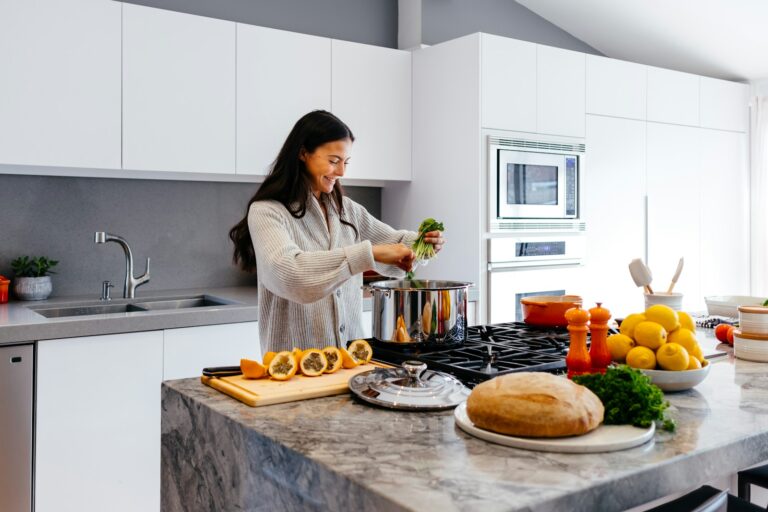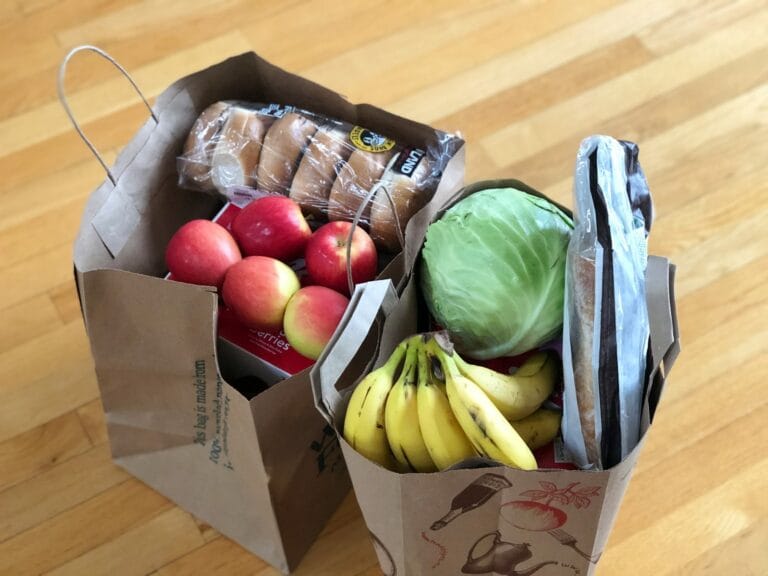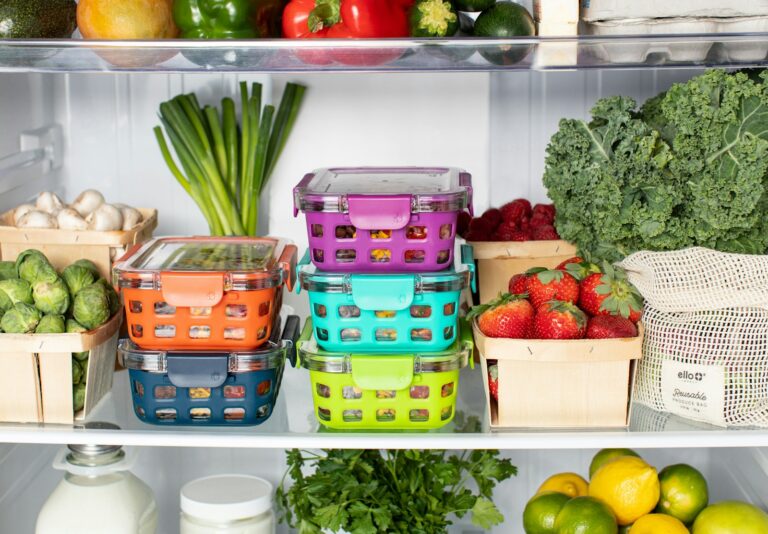Keeping your house clean doesn’t have to be a huge project or eat up your whole weekend. The secret is building a few easy habits into your day and using some smart tricks to stop messes before they get out of hand. Most folks imagine they need to scrub for hours, but actually, it’s the little things you do every day that keep things under control.
You can totally change how you clean by focusing on four areas: simple daily habits, organizing to reduce clutter, picking the right tools, and having a plan for each room. These daily habits to keep your home clean work way better than marathon cleaning sessions because you’re not letting dirt pile up in the first place.
This guide will help you spend less time cleaning and still keep your place looking great. You’ll pick up some practical strategies that fit into a busy day, and maybe realize that small changes can really lighten your cleaning load.
Essential Daily Habits for a Clean Home
A few quick routines built into your day can stop mess from taking over. These four habits only take a few minutes but make your place feel organized and fresh.
Make Your Bed Every Morning
Making your bed daily really does set a better tone for the whole day. It takes under two minutes and instantly makes your bedroom look tidier.
A made bed makes your room seem about 80% cleaner right away. It turns your bedroom into a calm spot to relax at night, not just a reminder of the morning rush.
Quick bed-making steps:
- Pull the covers straight
- Fluff and arrange pillows
- Fold any throw blankets at the end
Try this tomorrow. Even if the rest of the day is hectic, you’ll have one neat space waiting for you.
Clear Surfaces and Remove Clutter Regularly
Tidying as you go is a lifesaver. Spend five minutes in the evening putting things back where they belong.
Start with high-traffic spots. Kitchen counters, coffee tables, and bathroom sinks get messy fast.
Daily declutter targets:
- Mail and papers
- Keys, wallets, phones
- Dishes and cups
- Clothing
- Kids’ toys and school stuff
Put things back where they go right after you use them. That way, you skip the “where did I leave that?” routine.
Give everything a home. Once you do, tidying up feels automatic.
Handle Dishes and Kitchen Mess Immediately
Run the dishwasher before bed and empty it in the morning so your kitchen is always ready to go. Clean dishes mean you can cook without first scrubbing pans.
Wipe counters while your coffee brews. These little moments add up and keep the kitchen in shape without a big cleaning session.
Kitchen maintenance routine:
- Load the dishwasher after meals
- Wipe up spills right away
- Put away ingredients as you cook
- Clean cutting boards immediately
- Take out trash when it’s full
Don’t let dishes pile up. Dried-on food is a pain, and it can make your whole house smell off.
Ventilate and Refresh Indoor Air
Fresh air helps get rid of cooking smells, pet odors, and that general stuffiness. Crack open some windows for 10-15 minutes each morning to keep the air moving.
Good airflow also keeps moisture from building up, which is especially important in bathrooms, kitchens, and basements.
Daily air freshening tips:
- Open windows on opposite sides of your home
- Use bathroom fans during and after showers
- Turn on the kitchen exhaust when cooking
- Change air filters every month
- Add a few houseplants for natural air cleaning
Ceiling fans help move air around, too. Even if the windows are closed, moving air just feels fresher.
Organize and Declutter to Prevent Mess
Setting up some organizing systems and getting rid of extra stuff keeps mess from creeping in. Regular decluttering with smart storage makes daily cleaning a breeze.
Establish a Decluttering Routine
Set a timer for 15 minutes each day and tackle a quick decluttering task. Professional organizers recommend this because it keeps things from getting out of control.
Tackle just one small spot at a time. High-traffic areas like:
- Kitchen counters
- Coffee tables
- Entry tables
- Bathroom vanities
Weekly tasks can be a little deeper—think closets, drawers, or storage nooks. Pick a room each week so it never feels overwhelming.
Monthly reviews help you spot things you haven’t used. If something’s just sitting there for a month, maybe it’s time to donate or toss it.
Try the “one in, one out” rule for new stuff. Buy a new shirt? Donate an old one. That way, things don’t pile up.
Decide quickly—don’t spend more than 30 seconds on each item. Keep, donate, or toss, and move on.
Organize Storage Spaces Efficiently
Keep similar things together in set spots. Store what you use most at eye level so it’s easy to grab.
Clear bins are great for small stuff like office supplies or toiletries. Label them so everyone knows where things go.
Maximize vertical space with shelf organizers and stackable bins. Hang hooks on walls or inside doors for more storage.
Set up zones in each room:
- Kitchen: Cooking, cleaning, and food storage areas
- Bedroom: Sleeping, dressing, and work spots
- Bathroom: Grooming, towels, and cleaning stuff
Drawer dividers are handy for keeping small things sorted. Use them in junk drawers, utensil drawers, or desks.
Put seasonal things up high or under beds. Everyday items should be easy to reach.
Leave a little empty space in storage spots so you’re not cramming things in. Filling bins only about 80% makes it easier to find stuff.
Set Up Donation and Disposal Systems
Keep a donation box in your closet or laundry room. Drop things in as you find them.
Plan a monthly trip to donate items. Otherwise, boxes just sit around gathering dust.
Set up sorting bins labeled:
- Keep
- Donate
- Trash
For important papers, create a shredding system. Shred and toss weekly to avoid piles.
Digital clutter counts, too. Delete old photos, emails, and files every month. Unsubscribe from lists you never read.
Check out local recycling options for electronics, batteries, and hazardous stuff. Lots of places have special collection days.
Sell valuable items online or at garage sales. You might make a little cash and clear out space.
Have garbage bags handy during your decluttering sessions. Makes it easier to finish the job.
Smart Cleaning Tools and Techniques
Having the right tools makes cleaning faster and less annoying. Good equipment and a few solid methods help you clean every surface with less effort.
Use the Right Cleaning Tools for Each Task
Different jobs need different tools. Professional cleaners use special equipment to get things done quicker and better.
For dusting, extendable handles are great for high shelves and fans. Spray bottles work well for glass and all-purpose cleaners.
Essential cleaning tools by room:
| Room | Best Tools |
|---|---|
| Kitchen | Degreasing sprays, scrub brushes, stainless steel cleaners |
| Bathroom | Toilet brushes, tile scrubbers, shower squeegees |
| Living Areas | Dusting wands, furniture polish, lint rollers |
| Bedrooms | Vacuum attachments, fabric fresheners, drawer organizers |
Keep separate cloths for bathrooms and kitchens to avoid spreading germs.
Store your supplies in a caddy so you’re not running back and forth.
Vacuum and Mop for Immaculate Floors
Pick a vacuum that matches your floors. Carpets need strong suction and a rotating brush. Hard floors do better with a gentler setting.
Vacuum high-traffic areas twice a week. The rest can wait for a weekly run.
Empty your vacuum bag or canister when it’s half full. If you wait too long, suction drops a lot.
Mop hard floors after vacuuming to get rid of stuck dirt. Hot water works for most, but double-check your floor’s cleaning instructions.
Use different mop heads for different rooms. You don’t want to mop the kitchen and then the bathroom with the same one.
Wring out your mop well so you’re not soaking the floors. Too much water can damage wood and leave streaks on tile.
Clean With Microfiber Cloths for Best Results
Microfiber cloths pick up dirt and bacteria better than paper towels or old rags. The tiny fibers trap stuff that other materials just move around.
Use a dry microfiber for dusting furniture, electronics, and blinds. It grabs dust thanks to static.
A damp microfiber is perfect for mirrors, windows, and counters—no streaks, and you often don’t need any cleaner.
Color-code your cloths:
- Blue for general cleaning
- Yellow for bathrooms
- Green for kitchens
- Red for really dirty spots
Wash microfiber separately. Don’t use fabric softener or dryer sheets—they coat the fibers and ruin the effect.
Swap out old cloths every 6-12 months. Worn ones just don’t work as well and might even scratch surfaces.
Room-by-Room Cleaning Strategies
Every part of your house needs a slightly different approach. Living areas get dusty, kitchens and bathrooms need a weekly deep clean, and high-traffic spots need a quick daily tidy.
Effective Dusting in Living Areas
Living rooms pick up dust fast, especially with people coming and going. Dust from top to bottom so you’re not dirtying what you just cleaned.
Microfiber cloths are great for furniture, shelves, and electronics. Start with ceiling fans, then move down to tables and baseboards.
Wipe electronics with a slightly damp microfiber. Always unplug first, and be gentle with screens—circular motions work best.
Vacuum upholstery weekly with the brush attachment to get rid of dust, pet hair, and crumbs.
Don’t skip picture frames, lamp shades, or decor. These spots are dust magnets. A room-by-room cleaning approach keeps you on track.
Deep Cleaning Kitchens and Bathrooms
Kitchens and bathrooms need a good scrub every week because of grease, moisture, and germs. These rooms take a little more time and stronger cleaners.
Kitchen Deep Cleaning Tasks:
- Scrub the microwave with baking soda paste
- Clean the oven with oven cleaner
- Degrease stovetop and range hood filters
- Sanitize cutting boards with a bleach solution
- Empty and wipe down fridge shelves
Bathroom Deep Cleaning Focus Areas:
- Scrub shower grout with an old toothbrush
- Remove soap scum from glass doors
- Clean the toilet, including the base and behind the tank
- Disinfect faucets and handles
- Change the shower curtain or give it a good wash
Use the right cleaner for each surface. Granite, for example, needs something different than laminate. Professional cleaning tips suggest finishing one room before you move on to the next.
Maintain High-Traffic Areas
Entryways, hallways, and family rooms get a ton of use, so they really need a little attention every day. Staying on top of these spots keeps dirt from piling up and saves you from those marathon cleaning sessions later.
Daily High-Traffic Maintenance:
- Sweep or vacuum the floors
- Wipe door handles and light switches
- Put away things that are out of place
- Clean up spills as soon as they happen
It helps to have doormats both inside and outside your doors. They catch a lot of the dirt before it spreads. Swap out the mats every week or whenever they start looking grimy.
Weekly High-Traffic Tasks:
- Mop hard floors with the right cleaner
- Give rugs and carpets a thorough vacuum
- Wipe fingerprints off walls and doors
- Tidy up storage spots like coat closets
Pay a bit more attention to places near pet food bowls, kids’ play areas, and mudrooms. Somehow, those always seem to get messy faster than anywhere else. If you’re looking for ways to make cleaning these busy spots easier, efficient cleaning routines can really help keep things under control.




